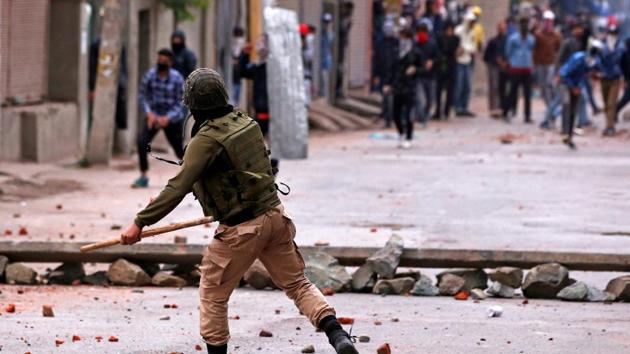It makes eminent sense for both the Centre and separatists to have a dialogue
Both the separatists and the Centre have not laid down any pre-conditions for a dialogue
When hardliner separatist Syed Ali Shah Geelani made it a point to celebrate a fellow Hurriyat Conference leader Shabir Shah’s daughter, for topping the CBSE Class XII exam in Jammu and Kashmir, many noticed his choice of words. Lauding the efforts of Sama Shabir, he said she was ‘a role model for the young generation’.

Geelani, known for his hawkish, pro-Pakistan stance, had used the same words, not too long ago. Referring to slain militant commander Burhan Wani, a year after his death in an encounter, Geelani hailed him as a ‘role model for the young generation’. That Wani, had in fact, emerged as a role model for thousands of young people in Kashmir, was evident soon after the news of his death spread on July 8, 2016.
Geelani’s statement on Sama Shabir is not the only one which indicates a slight shift in the position of the separatists. In another statement, issued by the Joint Resistance Leadership (JRL), comprising Geelani, Mirwaiz Umar Farooq and Yasin Malik, the three said that they were ready to be part of a dialogue after the Government of India clarified what it wants to talk about and speaks in one language, as they cannot afford to be part of an ambiguous effort that has no clarity and direction.
Both the separatists and the Narendra Modi-led government have signalled a shift and it makes eminent sense for both sides to sit across the table. It is important to note, straightaway, that neither side has articulated any pre-conditions. Home Minister Rajnath Singh, while making an offer for talks, has refrained from saying the dialogue would be ‘within the Indian Constitution’. Similarly, the separatists, while agreeing to set the negotiation process in motion, have not asked — as they have many times in the past — that the government first accept Kashmir as an international dispute and withdraw all troops from the state.
It is clear that the ground is being prepared for a dialogue, likely to be headed by the government’s interlocutor, Dineshwar Sharma, though Geelani has ruled out talks with the former intelligence bureau chief.
So what induced the change in thinking, of not just the separatists, but the government as well?
Soon after Modi took over the reins of office in May 2014, he first surprised everyone by calling Pakistani Prime Minister Nawaz Sharif for his swearing-in ceremony. Within three months, however, the government called off foreign secretary-level talks because the Pakistani high commissioner met with leaders of the Hurriyat Conference. The foreign secretary called the Pakistani high commissioner a few hours before he was scheduled to meet Shabir Shah, saying the talks would be called off if he went ahead with his meeting.
If the government is now holding out an olive branch to the same set of separatists it saw as ‘anti-nationals’, it is due to the compelling ground realities in the Valley, where Wani continues to hold sway as a ‘role model’ for an increasing number of youth, willing to choose the path of violence.
Wani’s death has clearly marked a watershed moment in Kashmir and can be linked directly to the steady and increased numbers of locals willing to embrace ‘martyrdom’. Sustained operations against militants have not served as a deterrent, but have added to their numbers. According to the state police, 121 militants have been killed and 216 local youth have joined militancy since Wani’s killing in 2016.
In the past six months, New Delhi has made several overtures. It first appointed Sharma as the interlocutor, who then crafted the amnesty scheme for first-time stone-pelters that benefitted over 4,000. It also announced a conditional ceasefire for the holy month of Ramzan and by offering talks, has acknowledged the separatists as stakeholders in the peace process.
In Kashmir, where the ground realities are complex, the Hurriyat might still take time to walk the talk. If it has nuanced its response — by seeking clarifications and not rejecting the offer out right — it is because it knows that the dialogue is an opportunity to resurrect itself politically. The Hurriyat leadership lost control of the Kashmir street after Wani’s death. The stone-pelters, who often bring the Valley to a standstill, are a potent, leaderless force which has even mocked the Hurriyat and questioned its legitimacy. The separatists do not resonate with today’s young generation like they did in the early nineties when the insurgency first took root.
A seat on the high table is the perfect opportunity to change that, provided the Hurriyat has the wisdom to seize it.
harinder.baweja@hindustantimes.com






